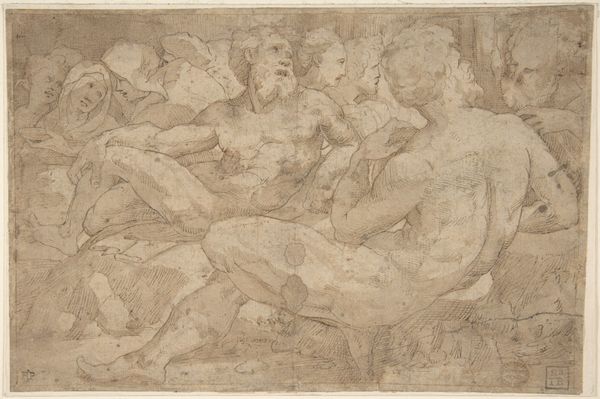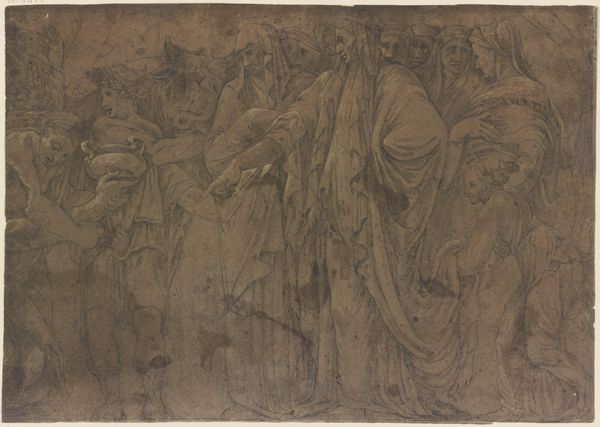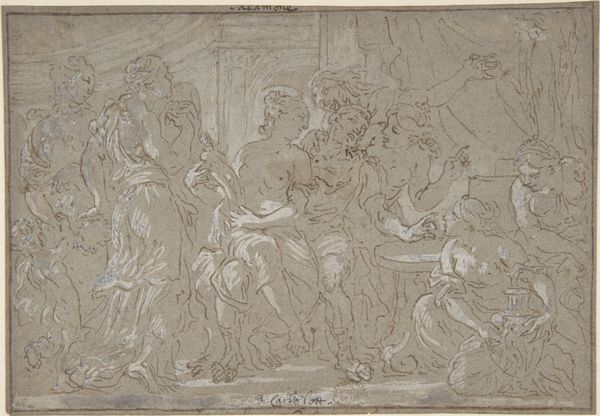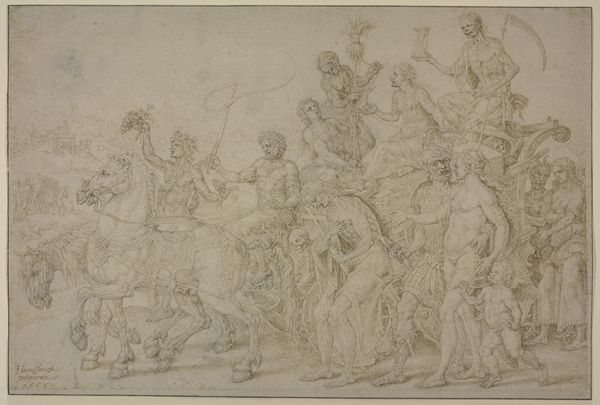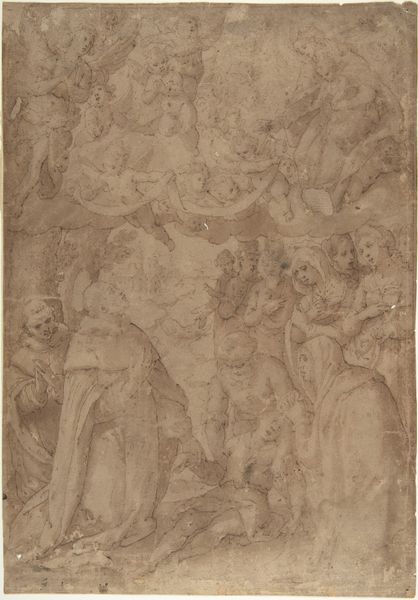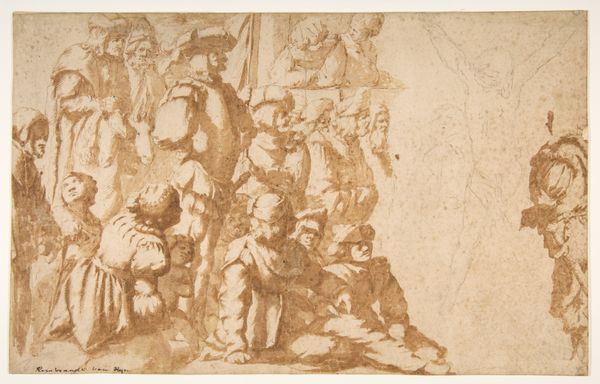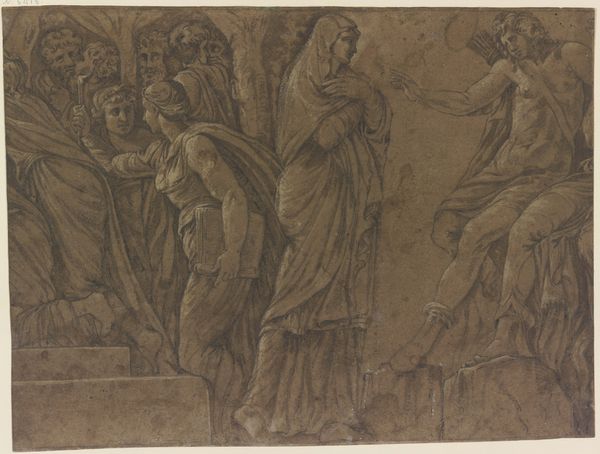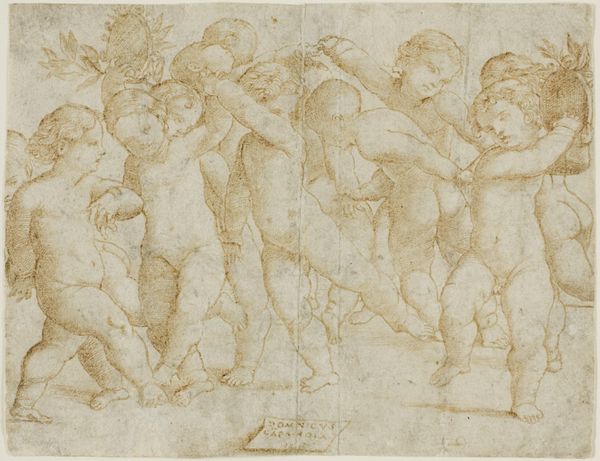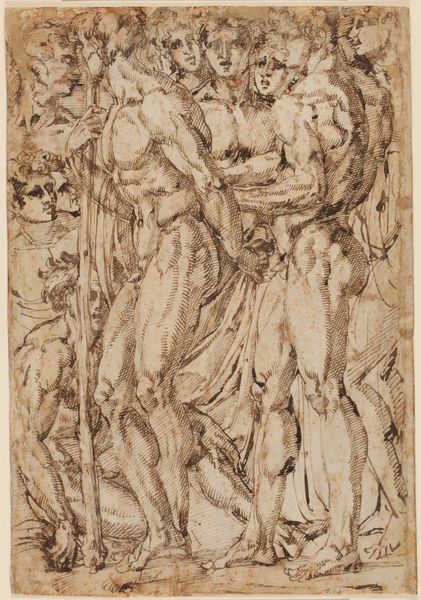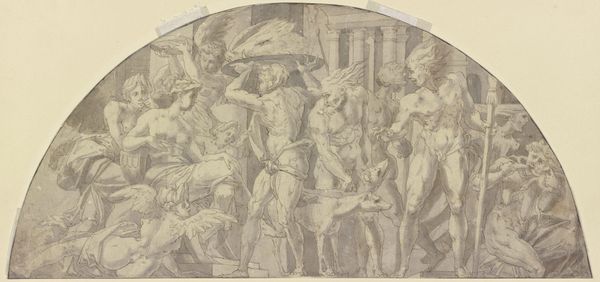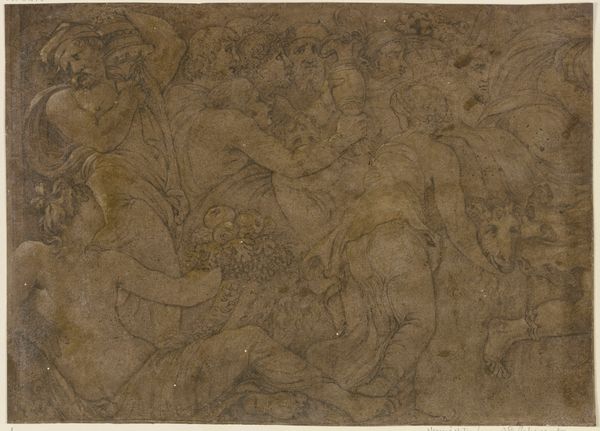
Der verlorene Niobidenfries an der Fassade des Palazzo Milesi in Rom 1656
0:00
0:00
drawing, painting, paper, ink
#
drawing
#
high-renaissance
#
baroque
#
painting
#
pencil sketch
#
etching
#
figuration
#
paper
#
ink
#
14_17th-century
#
history-painting
#
roman
Copyright: Public Domain
Curator: This intriguing work, held at the Städel Museum, is entitled "Der verlorene Niobidenfries an der Fassade des Palazzo Milesi in Rom." Created around 1656 by Polidoro da Caravaggio, it’s rendered in ink on paper. Editor: Lost, indeed. Even in this sepia-toned sketch, I can sense the emotional turbulence. A flurry of figures caught in what looks like utter despair and chaos. The dramatic positioning of the figures certainly amplifies that. Curator: Precisely. This piece offers a glimpse into how art functioned publicly in 17th century Rome. Polidoro, inspired by classical antiquity, designed it as a frieze for a palazzo façade, transforming architecture into a stage for public storytelling. The scene depicts the tragic myth of Niobe, whose children were slain by Apollo and Artemis. Think of it: passersby would have been confronted with this potent visual narrative embedded in the cityscape. Editor: A chilling narrative, and a pointed one, isn’t it? Niobe, punished for her hubris in boasting about her fertility. It raises questions about the subjugation of women and the dangers of perceived female power. Curator: Absolutely. The image engages themes of divine retribution, morality, and power dynamics. Polidoro, who was Roman, skillfully merges High Renaissance and Baroque elements, creating a work that’s both classicizing and emotionally charged. The physicality of the figures, the exaggerated gestures - Baroque drama at play. Editor: And consider the loss the title speaks to, the *lost* frieze. The sketch becomes a record, a protest against erasure, doesn’t it? Making visible, in a sense, that which has been socially or physically demolished. A reminder that the stories art tells – mythological or otherwise - endure. Curator: Yes, this drawing allows us to speculate how artwork could mold the visual culture. It reveals not only his artistic practice but also the vital relationship between art and social narrative during that period. Editor: For me, it underlines the importance of preservation – of cultural memory. Of the narratives, like Niobe’s, that speak across centuries about pride, loss, and the vulnerable bodies caught in between. Curator: A story well worth preserving. Editor: Agreed. A potent fragment that gives pause.
Comments
No comments
Be the first to comment and join the conversation on the ultimate creative platform.
